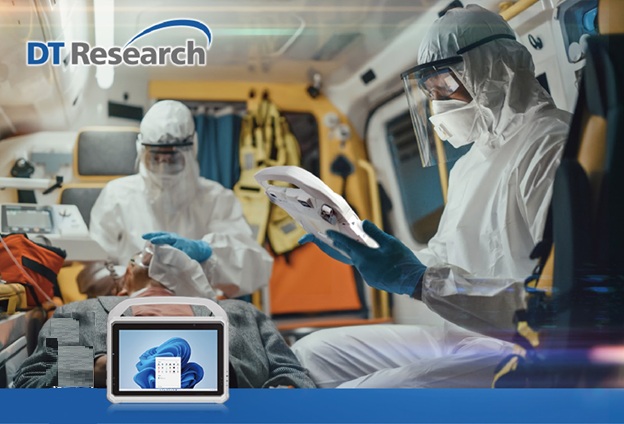
In emergency response, seconds can mean the difference between life and death. For EMS professionals and first responders, having the right tools at the right time isn’t just convenient, it’s critical. As the landscape of emergency medical services evolves, rugged medical tablets have emerged as indispensable devices that are transforming how care is delivered in the field.
Built tough and equipped with cutting-edge technology, these rugged mobile devices are designed specifically for the unpredictable and high-pressure environments that EMS teams face daily—from roadside accidents to disaster zones and large-scale public health emergencies.
Rugged by Design, Ready for the Unpredictable
Emergencies don’t come with a warning like weather reports or ideal working conditions. Rain, dust, drops, vibration, extreme temperatures – EMS teams must operate in all of it. Rugged mobile devices such as medical tablets are engineered to meet military-grade standards (MIL-STD-810H) for durability, which means they can take a fall from a stretcher and resist splashes of liquid and still function without malfunctioning.
These tablets also offer sunlight-readable touchscreens, glove-compatible displays, and IP65 or higher ratings for water and dust resistance, making them ideal for field use in unpredictable outdoor conditions.
At-Patient Care: Real-Time Access, Right Where It’s Needed
One of the biggest challenges for EMS workers is making rapid, informed decisions based on limited information. Rugged medical tablets help bridge that gap by giving paramedics and EMTs immediate access to electronic patient care records, vital signs, medication history, and allergy alerts—right at the patient’s side.
Instead of scribbling notes on paper to transfer later, responders can log vitals and interventions in real time. This not only improves accuracy and efficiency but also ensures continuity of care when the patient is handed off to the emergency room or another medical team.
The ability to scan IDs, update records on the go, and transmit data wirelessly with wireless communication and 4G/5G network connectivity means no time is lost, and the patient receives care tailored to their needs from the very start.
Connecting with Telehealth Specialists in the Field
Telehealth has expanded rapidly, but it’s not just for remote clinics or home care. EMS teams can now use rugged medical tablets to consult with physicians and specialists while still on the scene. Whether it’s a stroke assessment, trauma triage, or psychiatric evaluation, these virtual consultations enable first responders to deliver more accurate levels of care before arriving at the hospital.
Rugged tablets feature integrated cameras, dual microphones, and 4G/5G connectivity, allowing for secure video conferencing even in rural or underserved areas. Physicians can guide responders through complex protocols or make informed decisions about the appropriate destination facility, improving patient outcomes and reducing unnecessary ER visits.
A Lifeline in Field Hospitals and Large-Scale Events
When disaster strikes – be it a natural catastrophe, mass casualty event, or public health crisis, field hospitals become ground zero for emergency care. Rugged mobile systems are instrumental in these setups. They act as mobile workstations, triage tools, and communication hubs all in one.
In field hospitals, where infrastructure is minimal and conditions are often chaotic, having portable, battery-efficient, and network-capable devices is essential. Medical tablets streamline registration, tracking, diagnostics, and even medication administration.
Thanks to their hot-swappable batteries and lightweight yet durable frames, responders can keep them running through entire shifts without interruption. These features make them ideal for pop-up medical sites that require mobility, adaptability, and speed.
Simplifying Logistics While Enhancing Security
In addition to front-line use, rugged medical tablets can also support backend logistics. Inventory management, asset tracking, and secure access to sensitive data are all possible from the same device. Built-in RFID, barcode scanners, and secure authentication protocols help EMS teams manage resources while maintaining HIPAA compliance.
For agencies concerned about cybersecurity, many rugged medical tablets are built with enterprise-grade encryption, secure boot processes, and remote device management capabilities, ensuring that sensitive patient data stays protected.
In a profession where conditions are unpredictable and outcomes depend on speed and accuracy, rugged mobile systems such as medical tablets are becoming more than just useful—they’re mission-critical. Whether it’s for on-site patient care, connecting with remote specialists, or managing crisis response in a makeshift hospital, these tools are changing the way EMS teams deliver life-saving services.
By investing in reliable, field-ready technology, EMS agencies can ensure their teams are better equipped to meet emergencies head-on and patients can receive smarter, faster, and more coordinated care when they need it most.

